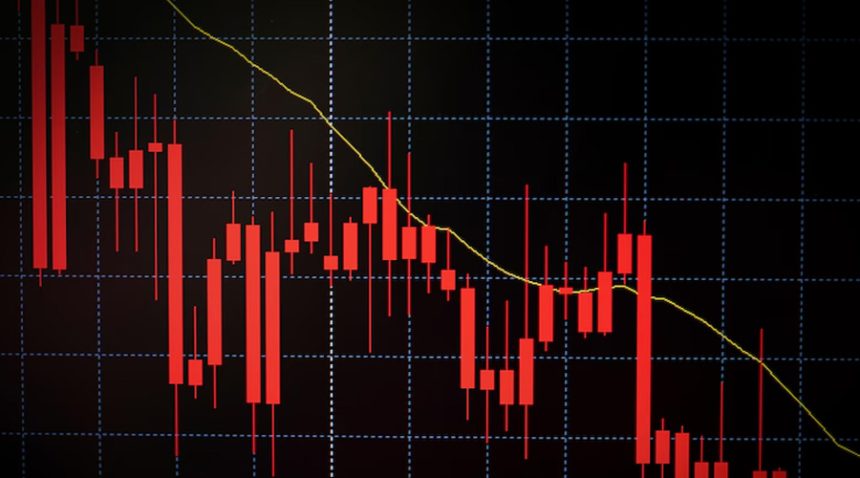Market hit by US tariffs, new bat coronavirus in China & Russia-Ukraine tensions
On Monday, February 24, 2025, the Indian stock market experienced a significant downturn, influenced by a confluence of global and domestic factors. The BSE Sensex index fell by 804 points, or 1.07%, settling at 74,507. Similarly, the Nifty50 index declined by 234 points, or 1.03%, closing at 22,561.45. This decline reflects the broader market sentiment, which has been affected by international trade tensions, health concerns, and geopolitical conflicts.
Global Influences on the Indian Market
A primary catalyst for the market’s decline was the recent announcement by U.S. President Donald Trump regarding the imposition of tariffs. On February 1, 2025, the U.S. administration implemented a 25% tariff on imports from Canada and Mexico and a 10% tariff on imports from China, effective February 4, 2025. These tariffs have raised concerns about potential disruptions in global trade, leading to increased volatility in international markets. The apprehension stems from fears that these trade barriers could escalate into broader trade wars, adversely affecting global economic growth.
In response to these developments, Asian markets exhibited mixed reactions. The Hang Seng index in Hong Kong decreased by 0.6%, and the Shanghai Composite index edged down by 0.1%. Conversely, Australia’s S&P/ASX 200 saw a marginal gain of less than 0.1%. These fluctuations indicate the pervasive uncertainty among investors regarding the potential impact of U.S. trade policies on the global economy.
Adding to the global unease, reports have emerged of a new bat-derived coronavirus in China. While details remain limited, the potential for another pandemic has instilled caution among investors, reminiscent of the economic disruptions caused by previous health crises. The possibility of widespread health implications and subsequent economic slowdowns has led to a more risk-averse approach in the markets.
Geopolitical tensions have further compounded market anxieties. Renewed hostilities between Russia and Ukraine have raised concerns about regional stability and its potential ripple effects on global markets. Historically, such conflicts have led to fluctuations in commodity prices, particularly oil and gas, and have influenced investor sentiment worldwide.
Domestic Market Performance
Within the Indian market, the downturn was broad-based, with 38 of the 50 Nifty stocks trading in negative territory. Notable decliners included:
Wipro
Infosys
HCL Technologies
Tata Consultancy Services (TCS)
Coal India
Tech Mahindra
HDFC Bank
Oil and Natural Gas Corporation (ONGC)
ICICI Bank
Trent
Bharti Airtel
IndusInd Bank
Grasim Industries
The technology sector, represented by companies like Wipro, Infosys, HCL Tech, TCS, and Tech Mahindra, faced significant pressure, with the Nifty IT index declining by 2.6%. This sectoral weakness can be attributed to concerns over potential changes in international trade policies, which could affect outsourcing and IT services.
Other sectors also experienced notable declines:
Nifty Metal Index: Down over 1%, reflecting concerns about global demand and potential trade barriers affecting metal exports.
Nifty PSU Bank Index: Decreased by over 1%, amid worries about asset quality and exposure to sensitive sectors.
Nifty Oil and Gas Index: Fell by over 1%, influenced by fluctuating global oil prices and potential impacts of international trade policies.
The broader markets mirrored this negative sentiment, with both the Nifty MidCap and Nifty SmallCap indices declining by 1.3% each. This widespread sell-off indicates a cautious approach adopted by investors across various market capitalizations.
Market volatility, as measured by the India VIX, surged by 5% during morning trading sessions. A rising VIX typically signifies increased fear and uncertainty among investors, often leading to more pronounced market swings.
Currency and Economic Indicators
The Indian rupee exhibited a defensive stance, trading at 86.7125 against the U.S. dollar. Persistent foreign portfolio outflows have exerted pressure on the currency, as foreign investors continue to offload local equities. The Reserve Bank of India’s interventions have aimed to stabilize the rupee, but the overarching trend reflects depreciation due to global uncertainties and domestic economic indicators.
Bond markets are also under scrutiny, with traders focusing on the Reserve Bank of India’s liquidity measures. A notable initiative includes a $10 billion three-year dollar-rupee swap scheduled for February 28, 2025. Such measures are designed to infuse liquidity into the system and manage short-term interest rates, aiming to ensure financial stability amid turbulent market conditions.
Outlook and Investor Guidance
The convergence of global trade tensions, health concerns, and geopolitical conflicts presents a complex landscape for investors. The imposition of tariffs by the U.S. has the potential to disrupt established supply chains, affecting export-oriented sectors within India. Additionally, emerging health threats and geopolitical instability contribute to an environment of heightened uncertainty.
Analysts suggest that investors adopt a cautious approach in the near term. Diversification across asset classes and geographies may help mitigate risks associated with market volatility. Staying informed about global developments and their potential domestic impacts is crucial for making well-informed investment decisions.






